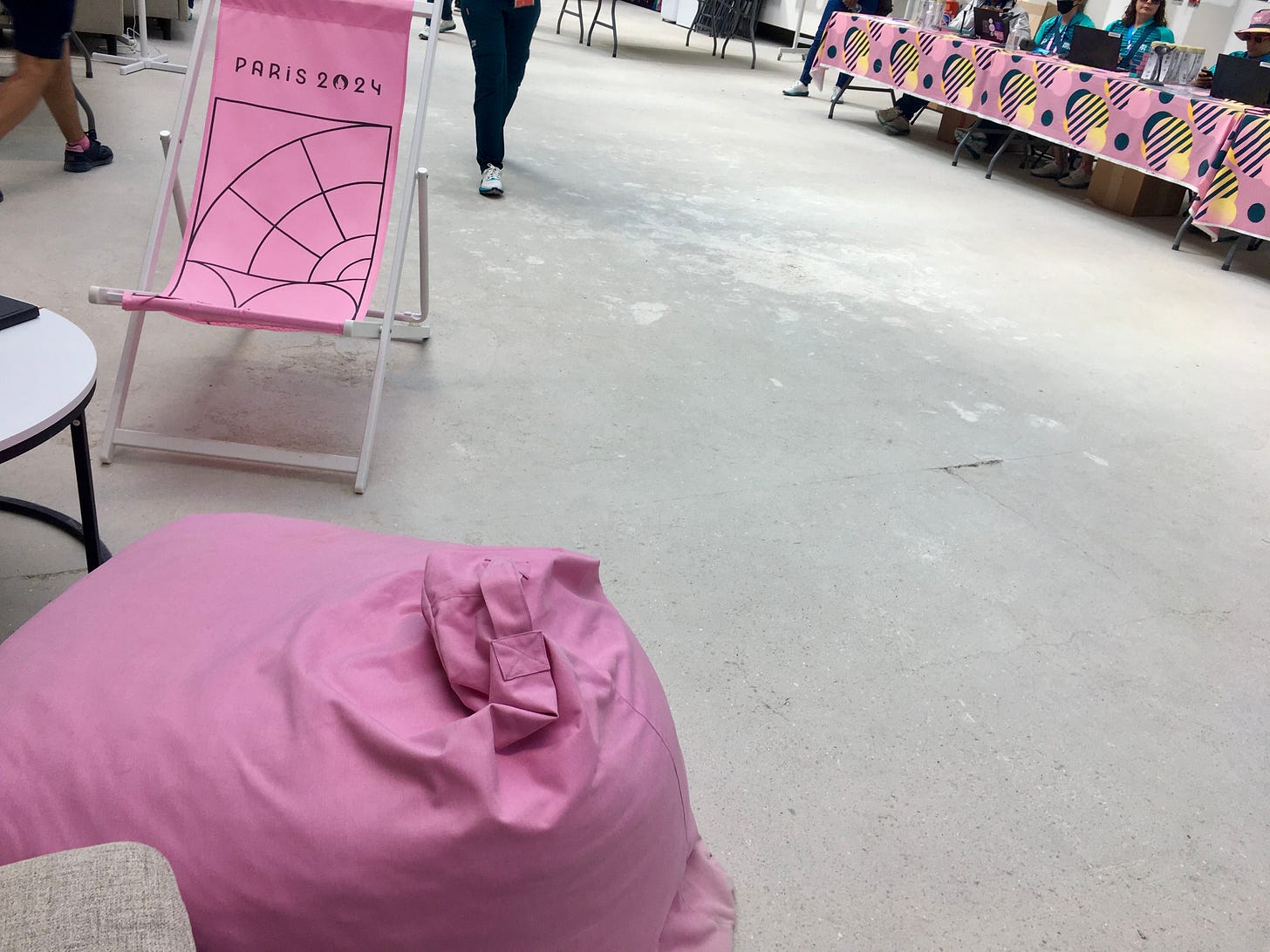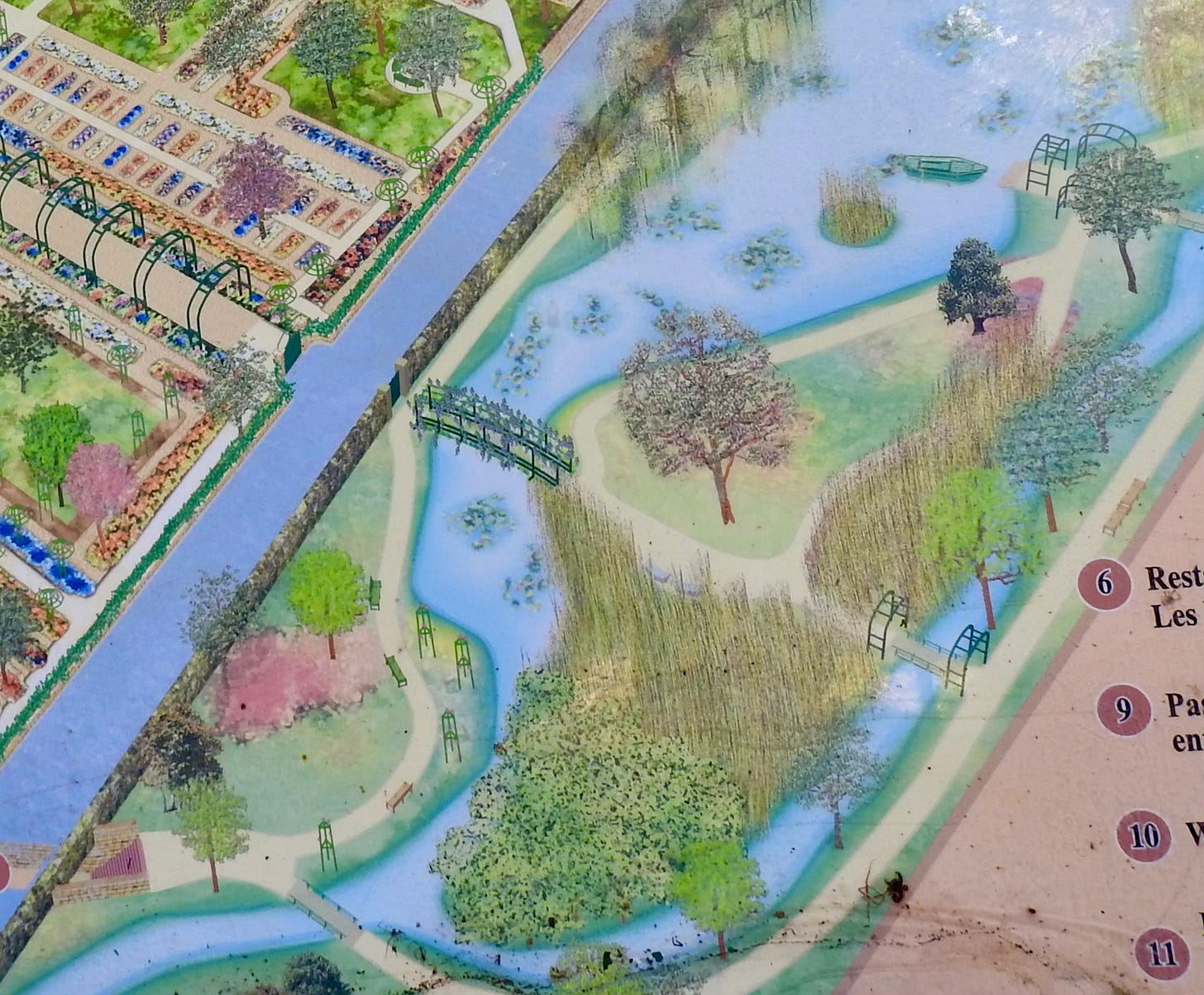Tranquility Mapping: finding peace and calm where you already are
… all I am saying is give peace a chance … and it can be mapped …
Do you remember bean bags? I think it started with a purple bean bag in the corner of my bedroom.
From a large family and noisy activity in the home, it was my corner to read, draw, think, and rest. It took me away from the noise and into a peaceful, calm corner. It wasn’t near a window. Instead, there were posters on the wall, the kind all teenagers have – pop stars and film promos – and a pretty patchwork rug with a pile of books and magazines that visually separated the area from the rest of the room.
There was something about that space. The scent of a candle and the low sound of a wind chime that barely moved, and me nestled in the hollow of my body shape.
That was my first unofficial tranquility map.
Tranquility Mapping is a simple, visual, and sensory way to find the places, both external and internal, that help you feel tranquil. It’s about paying attention to your surroundings and asking: Where do I feel most at ease? What in this space restores me? What overstimulates or drains me that I can move away from?
It’s not just about decluttering. It’s about discovery: noticing the places in your home, school, office, or routine where peace already “is” and the places where it “could” be or “should” be.
People often seek peace and calm in faraway places, such as retreats, vacation spots, quiet woods far from home. But most of us can’t uproot our lives to find tranquility. We need it to be where we are – between work meetings, in classrooms, during evening routines, or right before the next “to-do” list begins.
The truth is: calm is not a luxury. It’s a restorative space. And it can be mapped.
Tranquility Mapping isn’t just for therapists or designers. It’s for the teacher overwhelmed by noise and schedules that wants to create quietude in the classroom, the parent creating a quiet nook in a shared family space, the remote worker who realizes that their desk faces a distracting messy room, the student who needs a corner to read, and anyone who wants to feel more in control of their environment—and their overwhelm, anxiety, and stress.
With a pen and paper, you gently scan your environment using your five senses. You map out: calm zones, stress hotspots, natural elements (light, texture, scent), and emotional anchors that you want to move toward, or triggers that you want to move away from.
Then you make small changes: maybe turning a chair toward a window; establishing a “no phone” zone, including a scent that soothes, or creating an area devoid of mess and full of inspiring items. It’s not about perfection. it’s about intention.
I used Tranquility Mapping in my teaching days with my students, in my humanitarian work in education and psychosocial support, and since I started my Rainy Day Healing practice.
I’ve seen the surprising outcomes of Tranquility Mapping.
Teachers created a “calm corner” with their students and observed the decrease in classroom noise and their tension. A social worker introduced Tranquility Mapping in group sessions to help clients identify emotional triggers and swap them for peaceful places. A frenetic parent mapped her house and realized the bathroom was her only uninterrupted space and turned it into a place for pampering rituals. A doctor retreated to a bench facing a garden during work breaks as part of her restorative space.
They didn’t move to the mountains or the beach. They just mapped their way back to peace and serenity.
You don’t need fancy tools or a new house. You only need curiosity, a quiet moment, and the willingness to notice your world differently – and with intention to identify or create tranquility.
If you’d like me to guide you through Tranquility Mapping – solo, in your school, or in a team, in-person or remote, I’d be happy to assist because, sometimes, the calm you’re searching for is only a corner away.
Tranquility Mapping
In a world of sensory overload, Tranquility Mapping offers a gentle, creative way to reconnect with peace and calm, and recreate restorative spaces. Whether you're seeking stillness in a busy home, serenity in a classroom, or relief in a hectic office, this guide gives you the tools to map and reshape your environment to support your well-being.
Whether you have a garden, one room or an entire building to work with, this guide helps you transform your everyday spaces into sanctuaries of stillness with example, templates, and techniques, including a teacher’s guide to mapping calm with students.
Tranquility Mapping is ideal for anyone seeking a sensory-friendly space – families, educators, caregivers, therapists, wellness professionals, office planners, and HR departments.
Map your way to tranquility – simply, easily, immediately. Feel the benefits of restorative spaces. Don’t have to wait for peace to find you – design the tranquility you want to feel.
Related articles on Rainy Day Healing: Making my peace … with mindful strolling in nature in Paris and Making my peace … with tranquility.
Photographer: Martina Nicolls
Can’t see the whole article? Want to view the original article? Want to view more articles? Go to Martina’s Substack: The Stories in You and Me
More Paris articles are in my Paris website The Paris Residences of James Joyce
Rainy Day Healing - gaining ground in life





